The weather may be scorching, but that isn’t going to keep me from one of my true loves: hunting for unique Japanese souvenirs. Having lived in Japan for over five years, I still fall in love with finding unusual and beautiful Japanese items, especially when they are at bargain prices. So, despite the sweltering 35°C heat and 75% humidity, I forced myself and my partner, Jon, out to one of Tokyo’s best destinations for antiques: the Oedo Antique Market.
The Oedo Antique Market is a sprawling gem held roughly twice a month* in central Tokyo. Thanks to its location close to Tokyo Station, it’s very easy to get to, either by walking from said station, or getting off even closer at Yurakucho Station. I got off at the latter, which is serviced by the ever-convenient Yamanote Line, and walked only 20 meters from the exit before arriving at the first stall, already bustling with antique lovers.
The market is set up in an outdoor public space nestled between the two buildings that make up the Tokyo International Forum, with its impressively tall glass facade on one side and sleek-looking shops and cafes/restaurants on the other. The small little oasis in between boasts a number of trees that allowed us some shade as we manoeuvred our way through the plethora of stalls selling their wares.
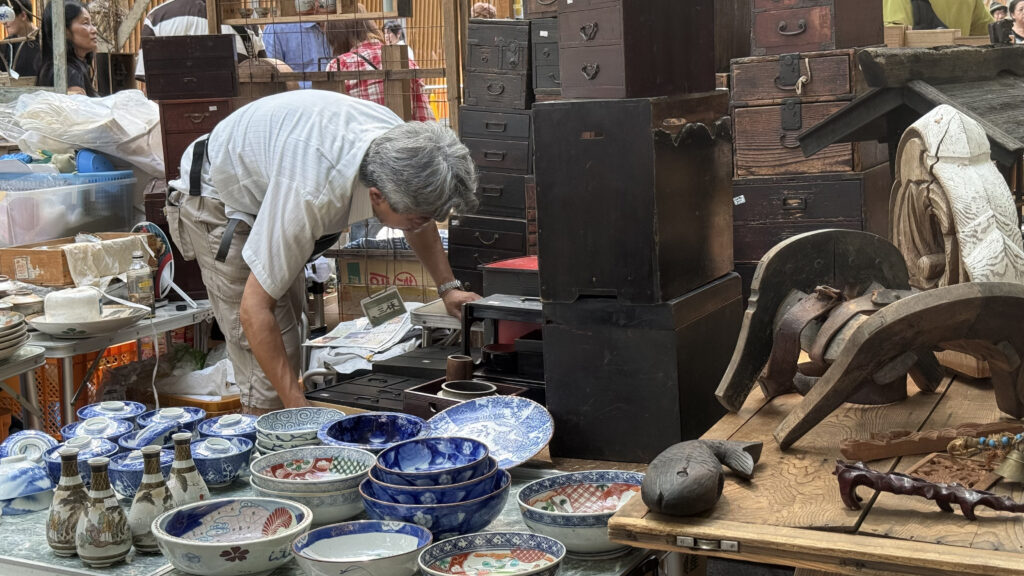
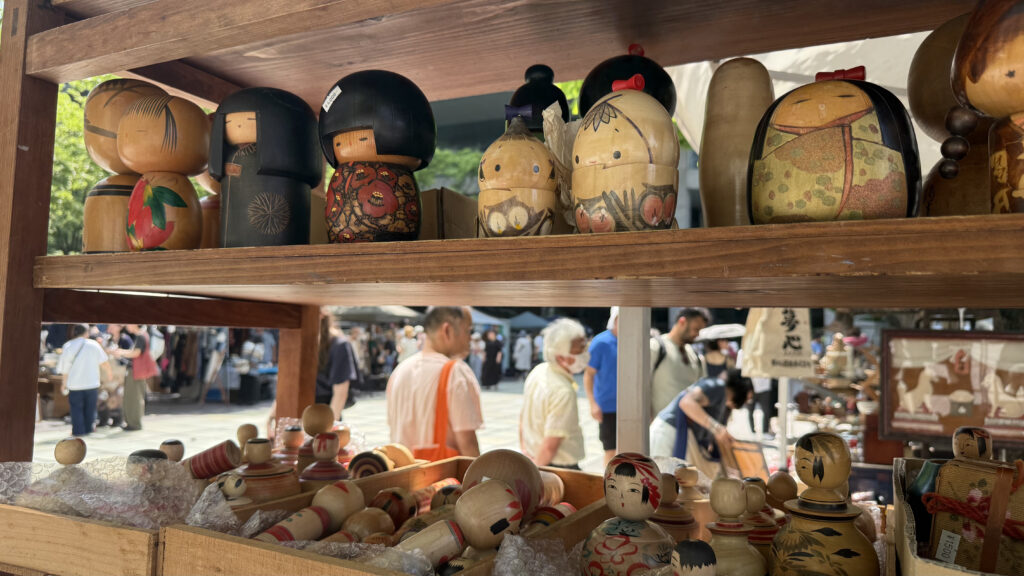
Although it’s called an “antique” market, there is a lot of variety on display, with stall owners selling crafts and goods that are more “retro” than “antique.” As I wove my way through the stalls, my eyes jumping from one to the next and back, I saw so many desirable items that I honestly felt a little overwhelmed. There were racks bursting with kimono going for a measly ¥1,000 each, tables groaning under the weight of ceramics from the Edo Period (1603 – 1868), tarps on the ground showing off books and jewellery, and shelves holding pottery or oni (demon) masks.
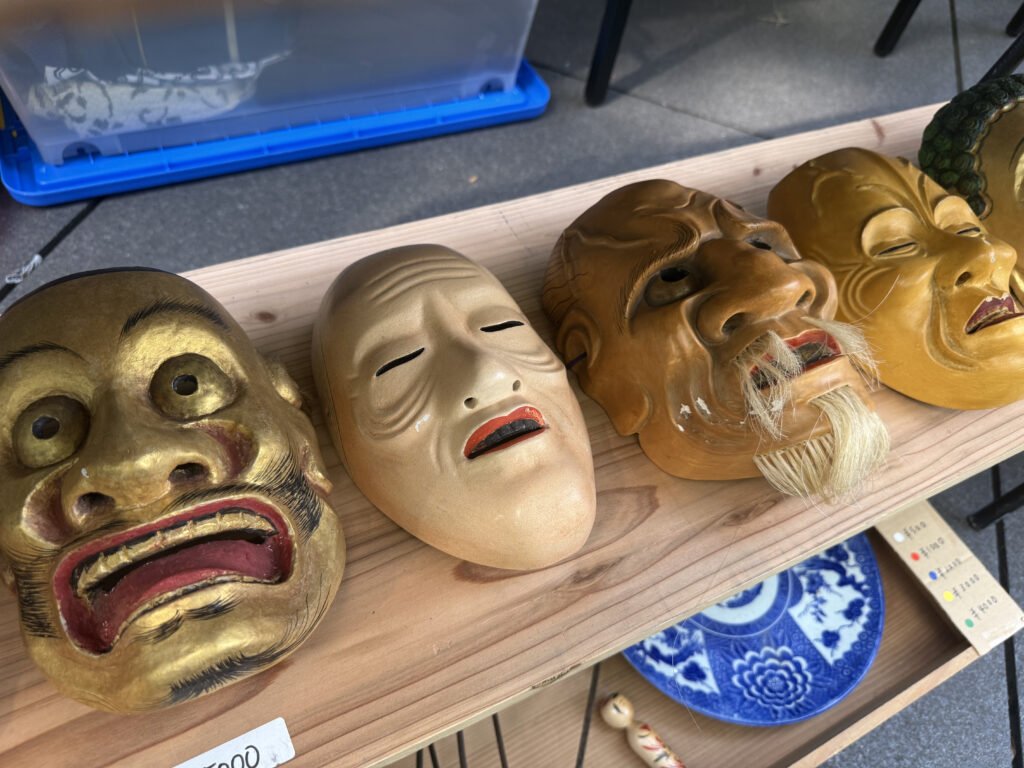
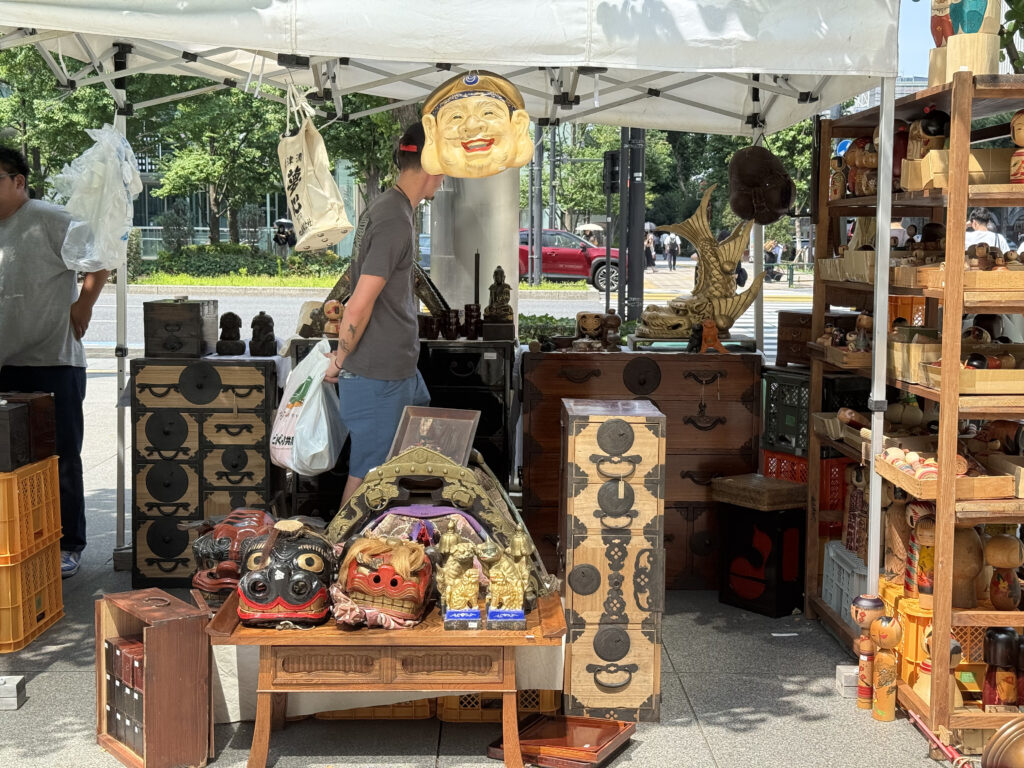
Over the years, and in line with the rise in tourists to Japan, the market has become extremely popular with international visitors. Why pay ¥500 for a tacky fridge magnet made of plastic, when you can spend the same amount on a ceramic sake cup? It’s functional, beautiful, and comes with much more history. Who knows what hands held this cup long ago?
While most of the stall owners are used to internationals at the market (and count on their buying power), many don’t speak English beyond stating the price. While I was wandering, I ended up assisting in one such interaction between a tourist and a seller over the providence of a rather pretty vase. After securing the sale for the seller (I should have asked for a commission), I got to chatting with the buyer—an Australian tourist from Melbourne by the name of Lisa Emmett—the journalist in me always at work.
When I asked her how she heard of the market, Lisa explained, “I saw it on Instagram and felt it was an authentic way to buy traditional Japanese items. Items that have a history rather than something you’d find in a souvenir shop. They feel more meaningful.” Lisa went on to tell me that she had studied fine art and was on the lookout for objects that inspired her. On that note, she pulled out a slightly battered sketchbook from a plastic wrapper, a purchase she had already made.
“This is a sketchbook from a designer in Kyoto,” she said, delicately thumbing through the pages. “It has a mixture of illustrations and then these swatches of wrapped silk thread.” The threads were remarkably well-preserved, glistening in various shades. Each page held different color palettes, from plum and wine to burnished orange and gold. “I’m an artist myself, so I can appreciate someone’s time and effort in their exploration of art,” she stated. The book set her back ¥28,000 (roughly $290 AUD) and will have a place on her coffee table for her to peruse back in Australia.
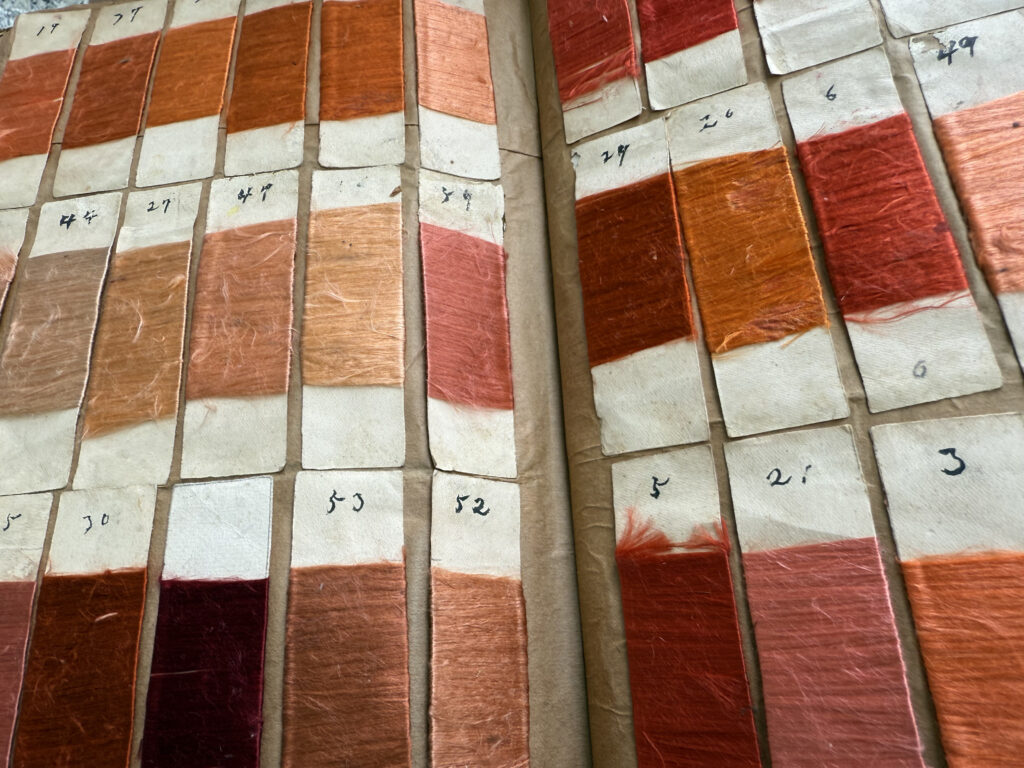
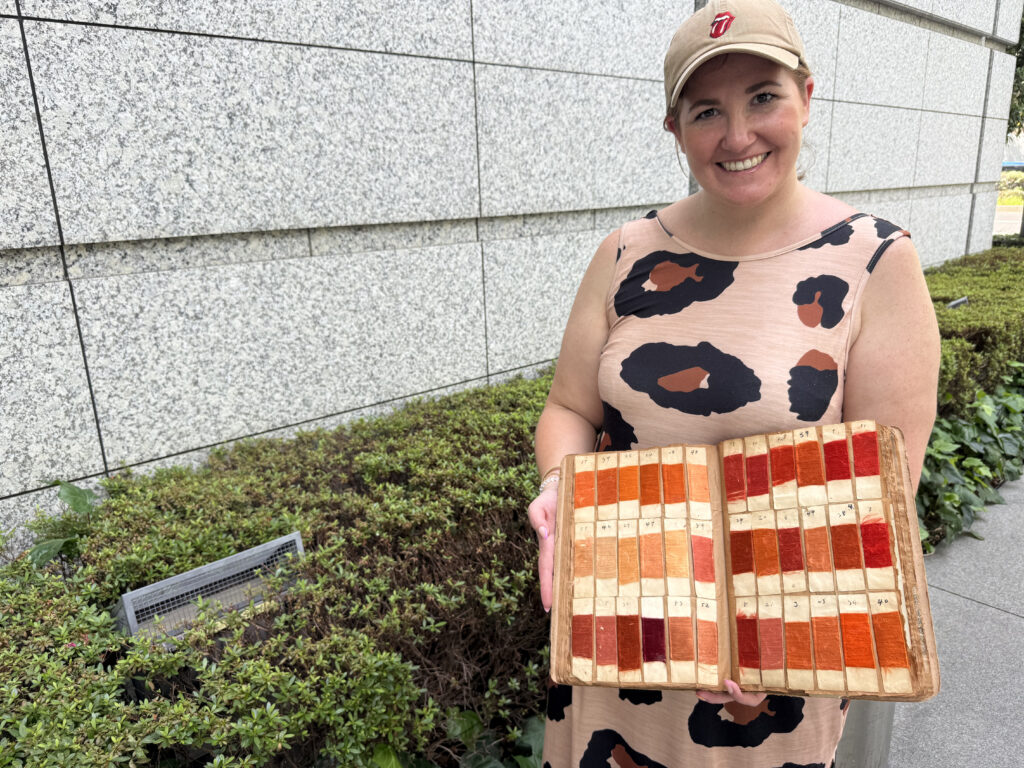
After parting ways, I went to seek out the seller of the book and find out how he discovered such a gem. With Lisa’s help, I found the stall and its owner, Yoshi, who was open to chatting with me. Yoshi came to the market all the way from Kyoto. “I do business in the Kansai area and some here in Tokyo,” he told me, “so I travel back and forth.”
Yoshi explained that he buys a lot of his items at auction, but he has other channels too. “Sometimes a friend of mine will call me and say, ‘I have some stuff to show you,’ and sometimes I find items on the internet.” Yoshi had noticed the rise in international interest in these items. “Of course I saw the rise,” he stated, laughingly adding, “that’s why I came.”
Another seller I got chatting with was Ian, who is half Canadian and half Japanese. Despite protesting that his English was not very strong, he went on to speak to me fluently about his experience at the market. “I started coming to the market roughly three years ago, but I started selling Japanese items about 12 years ago. I specialise in Japanese porcelain but I sell a lot of different items,” Ian told me.
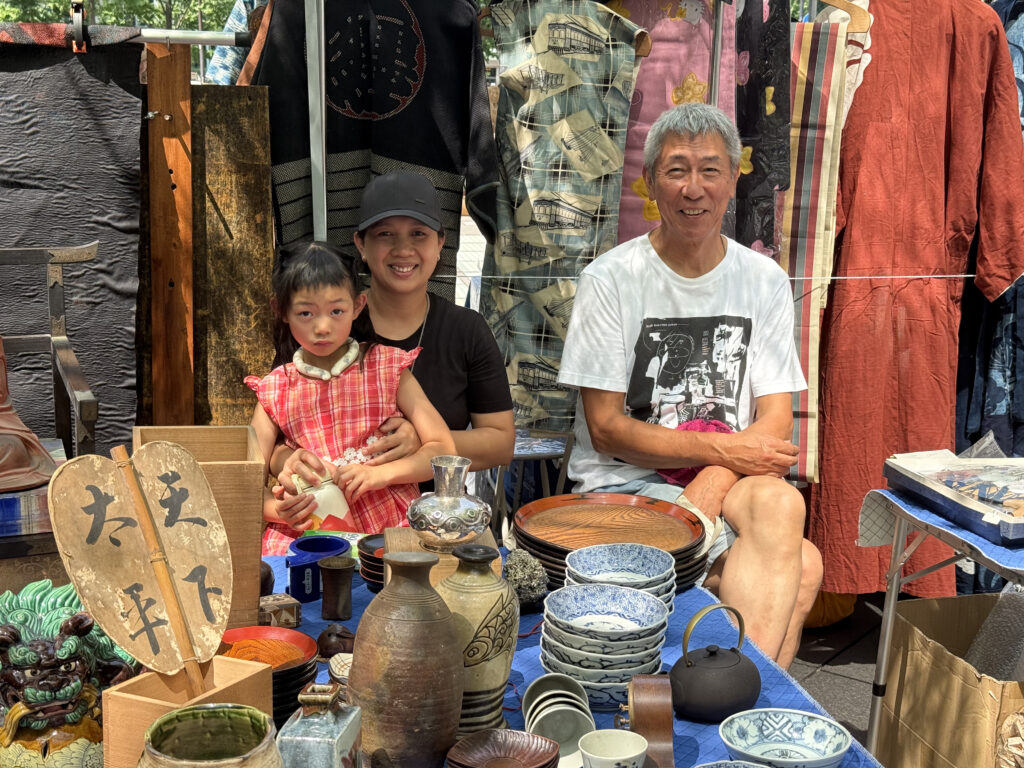
Like Yoshi, Ian also initially buys his products at auction. “They have many auctions like this in Japan.” When I asked about the markup between the auction price and the market price, Ian coyly said, “I don’t know,” before laughing and adding, “I think that’s a taboo question.”
My final visit was to a store run by an Italian gentleman, Adriano, who has lived in Japan for close to 30 years. Adriano’s stall was slightly less cluttered than others, focusing mainly on ukiyo-e and art prints. “I buy what I like,” he told me. “I love art, and what I like, I buy.” Although he too frequents auctions, Adriano felt prices have risen drastically. “Auctions nowadays—the prices have skyrocketed. So if you buy at auction, you cannot sell here.”
The market was a mixture of second-hand and art: some stuff was tat, others were worthy pieces. Though we know how the saying goes, beauty is in the eye of the beholder.
Adriano knows that the market attracts a variety of people—those who simply want to look and grab something to take back home and talk about, and those who are genuinely interested in art. He left me with some words of wisdom. “It doesn’t matter what you do; you should concentrate on one type of art. Like myself, I focus on prints,” he said, gesturing to his table. He pulled out an old ukiyo-e print to show me, and then handed me a lithograph he claimed was 120 years old.
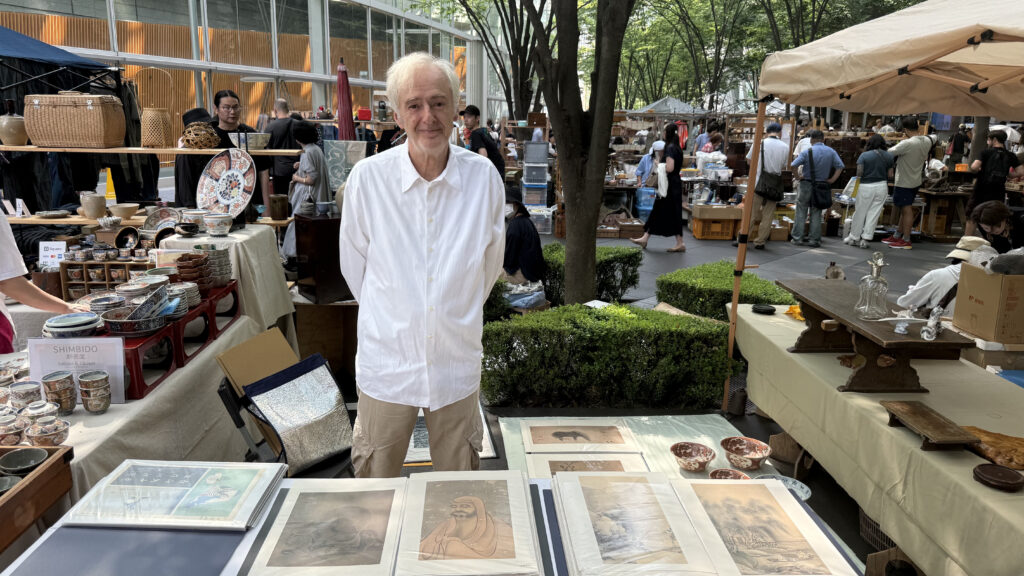
“If you have good items, people will buy. Naturally, you shouldn’t try to increase your price too much; you need to keep it at a reasonable level.” We talked about the current weak state of the yen, which has allowed tourists to spend like never before in Japan. “It’s inviting for sure,” he added.
Unfortunately for me, I live and work in Japan, and so earn in yen. Unlike tourists, I cannot quite benefit in the same way from the weak yen. I limited myself to one purchase—a beautiful beaded clutch that I like to imagine is from the 1920s. However, much like any addiction, I had a taste and I knew that I would be unable to keep myself from returning once again to feast upon the sheer variety of items at the Oedo Antique Market. May god have mercy on my bank account.
If you are interested in visiting the Oedo Antique Market, make sure to check the site below beforehand to confirm it’s going ahead.
* The market can be closed during August due to extreme heat.
